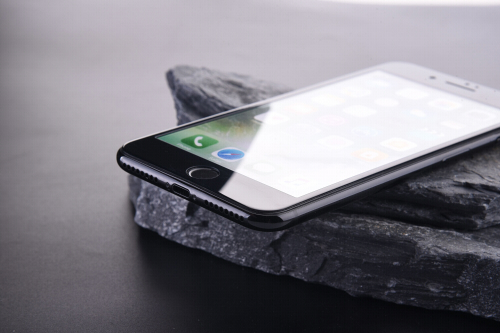How to Free up Space on Your iPhone
Emily Waite
Don’t let limited storage stop you from taking another Instagram-worthy photo or downloading another album to listen to on the go. It’s easy to free up space on your iPhone. Follow our best tips and tricks and you’ll lighten the load on your iPhone within an hour.
Storage audit
Before you do anything, it’s helpful to understand what’s taking up your storage space. Go to Settings, General, iPhone Storage. You’ll find a color-coded bar chart showing how your storage is being used, down to the gigabyte. Scroll down and you’ll see the list of apps and functions organized from most to least space. This is the index of your storage suckers.
Is your media taking up tons of room? The 6 GB shown next to the podcast app includes the dozens of podcasts you’ve downloaded over the year. Purge those old Reply All episodes you downloaded and listened to last year. Same goes for Spotify and any other apps with downloaded music, audio, or videos that you no longer need.
Lighten your load
Let’s be real. You haven’t opened PokémonGo in months. To truly can’t catch ‘em all, you might need some space. Delete any of the apps you no longer need.
Other apps might be useful later on, but don’t need space on your phone right now. Offloading an app deletes the app from your device but holds onto the data stored within that app. It doesn’t create as much space as deleting does, but it reduces the load and gives you the option to re-download later on. From the iPhone Storage interface, click on an app and tap offload. Once you’ve offloaded an app, the offload button will switch to reinstall. You can reinstall whenever you’d like to bring back the app and retrieve all app data present on your iPhone.
The browsing you’ve done on your phone also uses a sliver of data, but even that can take up valuable space. Safari and Chrome save your history to fill in your sentences and make it easier to log into sites you’ve previously visited. If you care more about the space than the convenience, go to Settings, Safari and click on Clear History and Website Data. For Chrome, open up the app and go to Settings. At the bottom of History, click Clear Browsing Data.

Photo cleanse
Onto the hard stuff: photos. By default, iPhones automatically stream your most recent 1,000 photos across all of your iOS devices. It’s good backup, but it’s also a space-grabber that can lead to redundant photo storage. To stop the stream, go to Settings, Photos, Upload to My Photo Stream, and switch it off.
Another superfluous space-grabber: HDR photos. Shooting in HDR takes three separate exposures and uses the best parts each to produce one photo. There’s no real reason to hold onto the other exposures once they’ve been blended into one nice one. Go to Settings, Camera and turn off the option at the bottom to Keep Normal Photo.
Don’t need all of your photos on your phone all the time? Consider uploading them to a cloud-based service and then deleting them from local storage. Google Photos and Dropbox are both good options. Google Photos is free and offers unlimited storage if you choose the option to backup your photos in high quality or “great visual quality at reduced file size.” The other option is to back them up with the original resolution, which is limited by your Google account’s cloud quota. Dropbox is also a good tool for saving your photos outside of your phone. Download the free Dropbox app and create a basic dropbox account which will give you two GB of storage at no cost. From there, you can add photos in full resolution to your Dropbox. Note that the higher your camera quality, the more space each photo takes.
Manage messages
Like photos, messages can take up space, too – especially when you’ve got a zillion group chats set to save on your iPhone “forever.” Forever is a long time. Do you really need messages any older than 30 days? OK, how about a year? Those are your three options. Setting your messages to automatically expire for anything other than “forever” should help. You can do this by going to Settings, Messages and adjusting the settings under message history.
Attachments sent through messages also take up space. If you’re in a group message thread with all of your extended relatives, chances are there’s quite a few videos of your uncle’s newborn. If your iPhone notices a lot of incoming attachments, you might see an option to Review Large Attachments, a section that sometimes shows up under Settings, General, Storage. If this does not appear, go to your messages and visit those family threads one by one. Clicking on the “i” icon in the top right corner of your message thread will bring up all photos and videos included in the thread. Go through them individually and manually delete the ones that you don’t need on your phone anymore.








